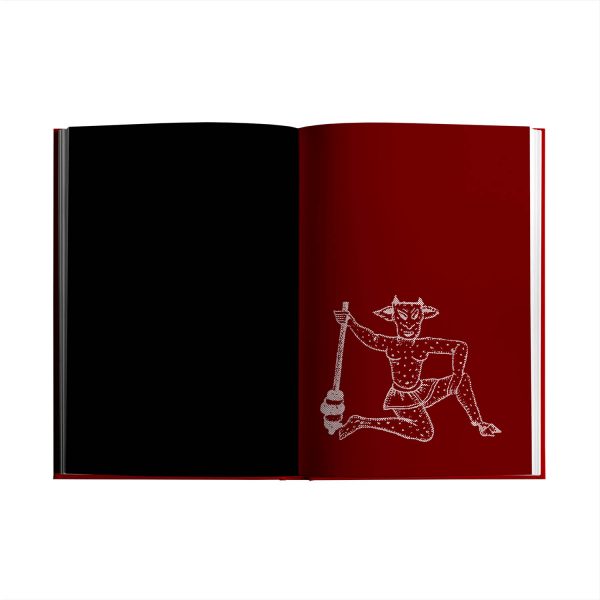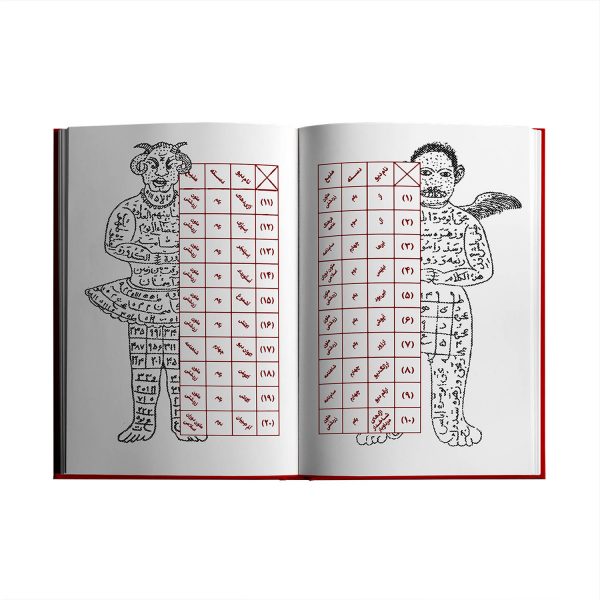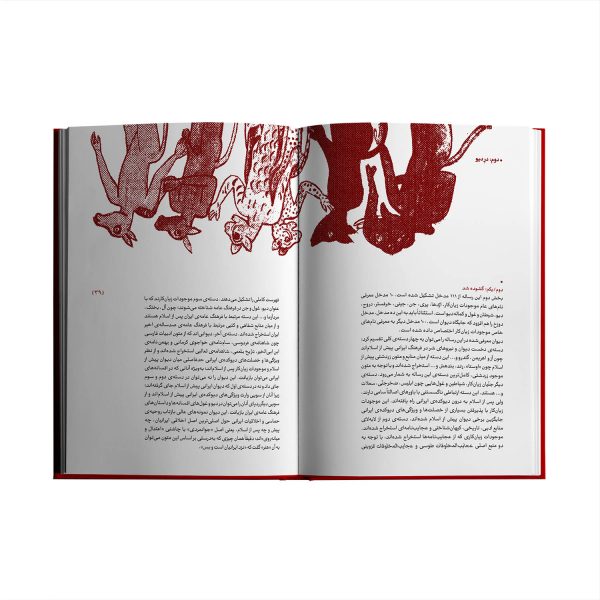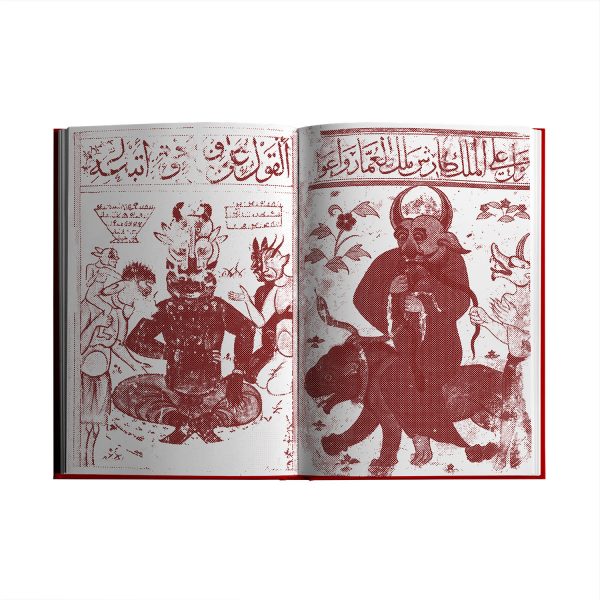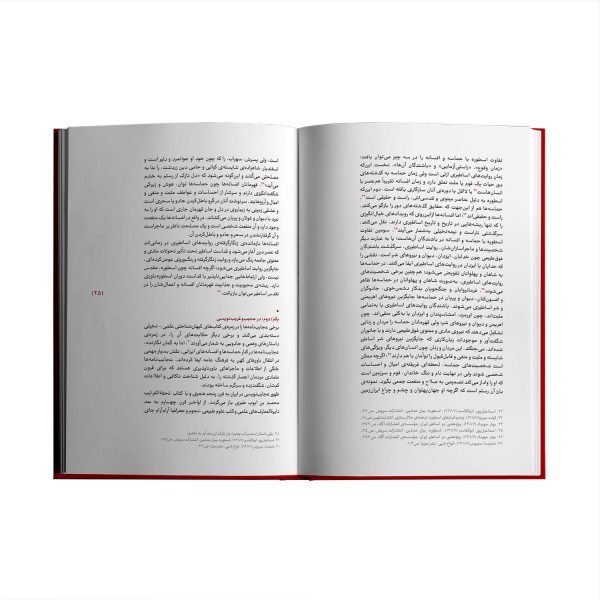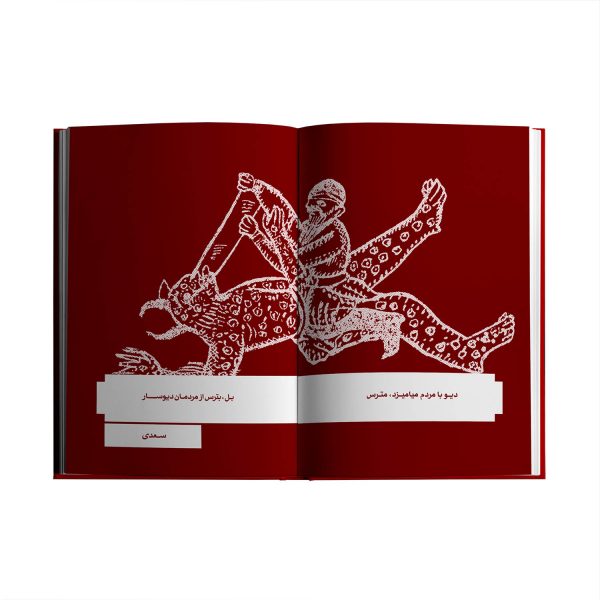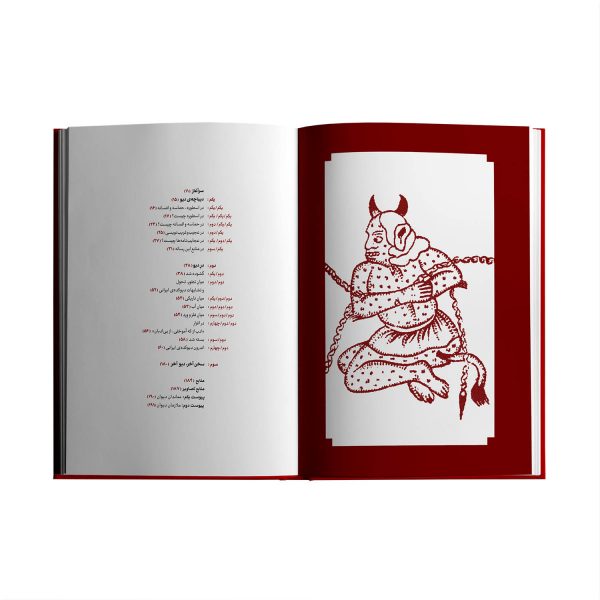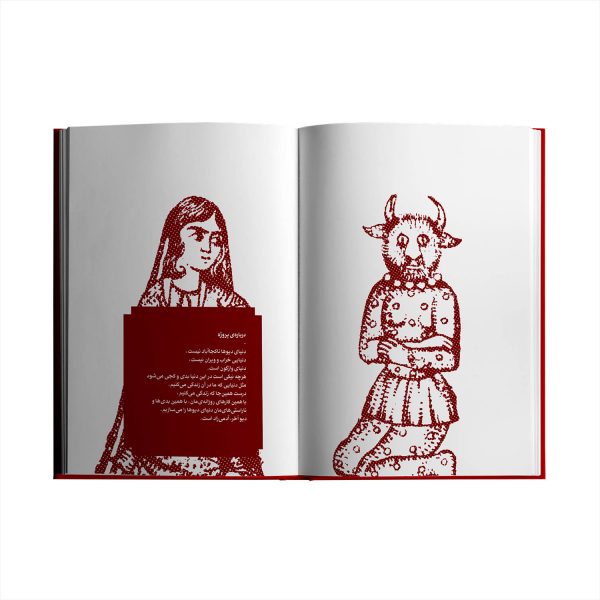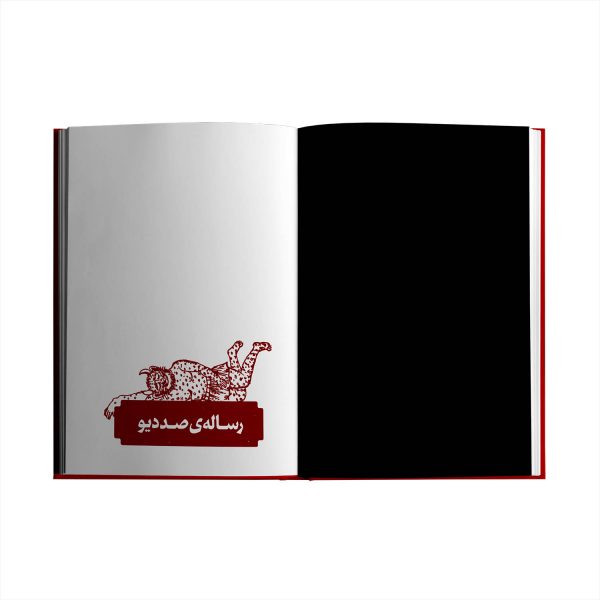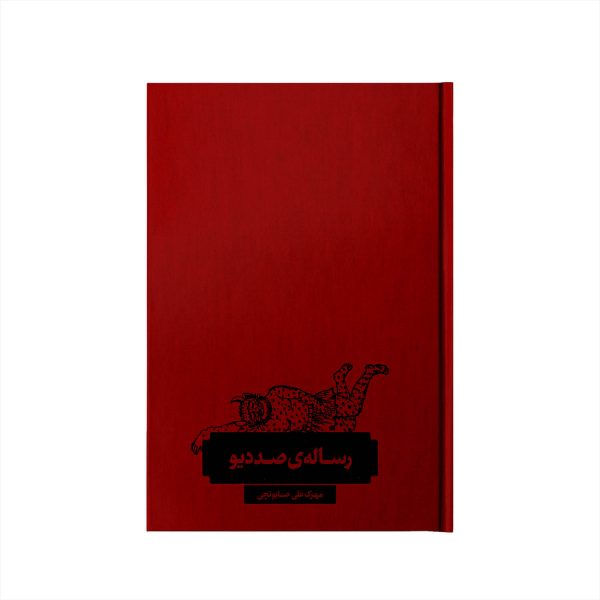Story
“The world of Divs is not nowhere,
It is not a world that is ruined,
It is upside down.
That is where good becomes evil, similar to the world where we live in.
The very place that we live in,
With our very daily acts, with the very evil and wicked acts of ours, we create the world of Divs.
The last Div, is the human being.”
The treatise of a Hundred Demons is a subset of the cultural and artistic projects of +3:30. From the reinterpretation of the old literature and paintings, +3:30 is an invitation to text-wearing; it is an attempt to value thought and knowledge by the means of visual narration, founded on the beliefs and mundane lives of people. Published in Tabl Space, this treatise is in 192 pages and has been launched along with the collection of A Hundred Demons.
The treatise of A Hundred Divs attempts to introduce Divs and demons according to the descriptions in Iranian poems and prose, the collection of which is titled “Iranian Div-house.” The extensive number of cosmographies in Iranian literature shows the significance of the culture, regarding the prevalence of its Div-house. Recognition of these kinds of creatures helps with a further understanding of Iranian culture and the existing link between our world and that of the Divs. As
“The world of Divs is not nowhere,
It is not a world that is ruined,
It is upside down.
That is where good becomes evil, similar to the world where we live in.
The very place that we live in,
With our very daily acts, with the very evil and wicked acts of ours, we create the world of Divs.
The last Div, is the human being.”
The treatise of A Hundred Divs can be interpreted as a Div-house that the audience, who passes through each page, comes across images of Divs, demons, and other similar creatures; images that are derived from the ancient Iranian resources. The treatise starts with a preface, then the door of the Div-house opens to introduce one-hundred of Iranian divs, and at last, after identifying the last Div, the door closes.
The first part, the preface of the Div, declares that demons and other terrifying names are concepts that are used as a means of teaching good and evil, essential and nonessential, to the children. Respectively, the author asks two main questions:
How and why were the characteristics of the Divs formed? In other words, which question or obscurity of life are they responding to?
Was the process of their creation a mere trick to maintain the social system, individual and collective social norms, especially on morality and the verbal and behavioral essentials and nonessentials?
This treatise answers the first question by delving into myths, defining them, and the process of their development in Iranian oral and written culture.
The second part includes 111 entries that have been listed in alphabetical order. The first ten entries introduce the popular names of the monstrous creatures in addition to a separate entry on their living place, namely Hell. Other hundred entries present the specific names of the creatures. Studying the similarities of the Iranian Divs, the ways of confronting them, and anecdotes about them, leads to answering the second question, as the Iranian Div-house was founded on the Iranian moral code, that is the “art” of ethics and was a means to support the tool of “from whom you have learned the morality? From those who have none,” or teaching in reverse. In other words, Iranian culture attributing the obscene and indecent acts to the evil creatures (or those who are immoral), identifies its own norms and attempts to teach arts of ethics by teaching virtue, through identifying vice.
In the last part of the treatise, in searching for the final div, we reach human; the one who is deprived of virtue, a human as it appears, but with behavior and thought of a Div. He is incapable of identifying the boundary between good and evil and acts as he desires. This is how a Div-like human can be much more threatening than any other evil being:
“Div never mates with people, have no fear
dread those who are Div-like”.
